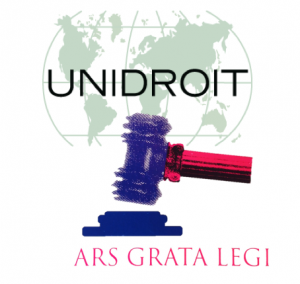In 1983, following the recommendation of a committee of experts set up at the request of the Executive Board of UNESCO to look into the criticisms then being made about the drafting of its 1970 Convention, in particular concerns raised by certain countries concerning the pillage of archaeological sites, UNESCO asked UNIDROIT to co-operate on issues such as “good faith” acquisition, choice of law, conflict of national laws, standing to sue, public policy and other differences between jurisdictions which made it difficult to recover cultural objects which had been illicitly transferred.
In 1986, after two specific studies, UNESCO supported UNIDROIT, because of its specific expertise in private law, in the decision to draft a new instrument that would take its cue from the 1970 UNESCO Convention but would also incorporate 25 years of reflection on the subject of illicit trafficking.

The UNIDROIT Convention underpins the provisions of the 1970 UNESCO Convention, supplementing them by formulating minimal legal rules on the restitution and return of cultural objects. It guarantees the rules of private international law and international procedure which make it possible to apply the principles set down in the UNESCO Convention. The two Conventions are at once compatible and complementary.
UNIDROIT is among the “relevant international organisations” called by the United Nations Security Council’s resolutions 2199 and 2253 to strengthen cooperation for the safeguard of cultural property, in particular to ensure the return of illegally transferred objects to their State of origin.
An Informal Ratification Task Force to promote wider accession to the 1995 UNIDROIT Convention was established at the UN Headquarters in New York at the event “Promoting and Strengthening the International Legal Framework for the Protection of Cultural Heritage – the 1995 UNIDROIT Convention” held on 28 February 2017. Material on the national implementation (analysis, studies, research, case law, …) will therefore be helpful to feed the discussions of such Task Force which is due to meet annually.
The 1995 UNIDROIT Convention Academic Project (“UCAP”) would also address targets of the United Nations’ “2030 Agenda for Sustainable Development”, in particular Target 16.4 (“By 2013, significantly reduce illicit financial and arms flows, strengthen the recovery and return of stolen assets and combat all forms of organized crime”).
Objectives and activities
UCAP has the main objective of promoting a favourable legal environment for restitution and return of stolen or illegally exported cultural objects through knowledge sharing and dissemination, as well as projects pursued individually by the partners and members or on the basis of joint initiatives. Key in this context is the divulgation and implementation of the 1995 UNIDROIT Convention on Stolen or Illegally Exported Cultural Objects and the 2011 UNESCO-UNIDROIT Model Provisions on State Ownership of Undiscovered Cultural Objects.
Education is a key tool in protecting cultural property and combating illicit traffic and UCAP is meant to increase the awareness and knowledge about the 1995 UNIDROIT Convention on Stolen or Illegally Exported Cultural Objects. It aims at promoting and linking pertinent (inter)national research made by entities and Universities holding courses in the field of cultural heritage law, in particular on the 1995 UNIDROIT Convention. It also wishes to promote the development of specific programs or modules.
UCAP seeks to assist scholars, students, practising lawyers, judges, other government officials, as well as art market players, such as art collectors, dealers, auction houses and museums by providing information about the 1995 Convention.
UCAP also provides an opportunity to assess the significance, the distinctive features and operational aspects of the 1995 Convention and its interaction with other regional and international instruments with a view also to assess their legal impact. To do so, UCAP needs the assistance of scholars and professionals.
Finally, taking a step further into cultural Heritage education, studies and research carry out by the means of UCAP will facilitate the identification of best practices in the art market in order to provide innovative means of implementation of the aforementioned instruments.
The Convention
Providing fundamental material such as the Convention Text, Explanatory Report, Follow Up, Informal Ratification Task Force, National Implementation Material, the Convention’s Preparatory Work and Information Note.
Library
Creating a comprehensive, digitalised, and searchable library of materials on the 1995 UNIDROIT Convention, including case law, scholarly articles, UNIDROIT interns and fellows’ papers as well as self-instructional and professional materials.
Selected Topics
Containing an in-depth look at the most intriguing themes of the Convention.
Events
Holding annual academic conferences, seminars, workshops and trainings on the Convention.
Influence
Appreciating the influence of the UNIDROIT Convention on national laws and case law.
